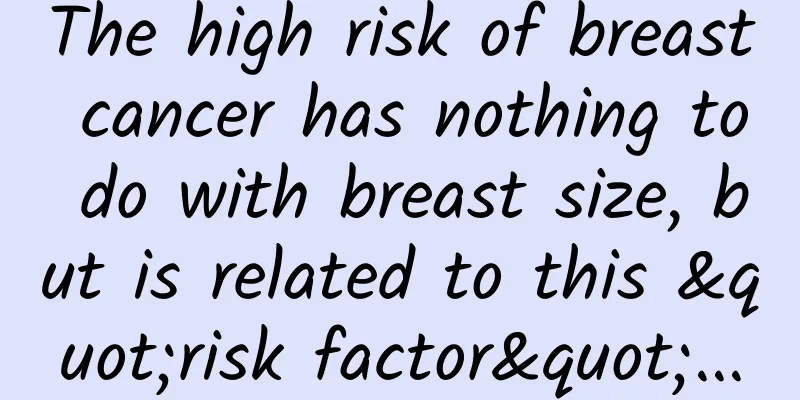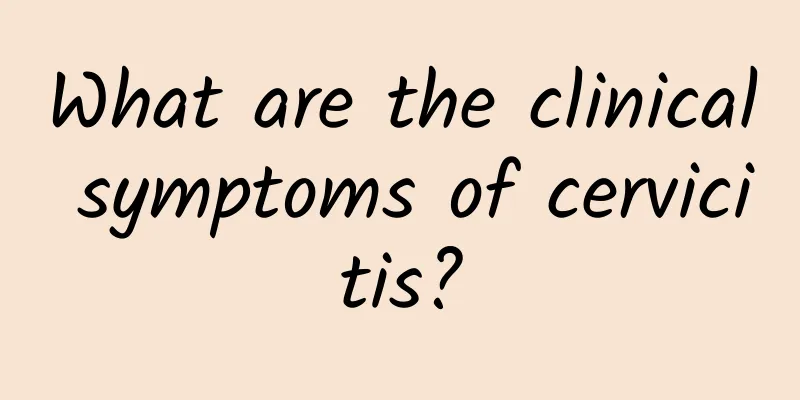The high risk of breast cancer has nothing to do with breast size, but is related to this "risk factor"...

|
Are people with larger breasts more likely to get breast cancer? This is a myth held by many women. Doctors point out that there is no direct causal relationship between breast size and breast cancer, but studies have found that obesity will increase the risk of cancer. If a woman has a large breast due to obesity, her risk of breast cancer is indeed higher than that of ordinary women, especially obese women after menopause should pay more attention. Professor Chang Chin-chien, chairman of the Breast Cancer Prevention Foundation, pointed out that breast cancer has been the most common cancer among Taiwanese women for many years in a row, and its incidence rate has increased fastest among the top 10 cancers. The most common sites of breast cancer are the milk ducts, lobules, and nipples of the breast. Although there are no obvious symptoms in the early stages, it is usually in the late stages when discovered. 5 signs of breast cancer risk A reminder to female friends: If you experience any of the following five major symptoms: 1. bloody discharge from the nipples, 2. abnormal sunken breasts, 3. redness, swelling and ulceration of the breast skin, 4. swollen lymph nodes under the arms, or 5. sudden changes in breast shape, you must seek medical attention immediately; breast cancer not only invades the breast itself, but can also easily metastasize to distant organs, so it should not be underestimated. In addition, studies have confirmed that those who have their first menstruation before the age of 12, whose menstruation ends after the age of 55, who are obese, or who have alcohol abuse habits, have a 1 to 2 times higher risk of developing breast cancer than the average person. In addition, those who gave birth to their first child after the age of 30, who have never given birth, and who are obese after menopause have a 2 to 4 times higher risk of developing breast cancer. Breast cancer is an invisible killer of women's health. High-fat diet and obesity can affect the growth of cancer cells. Obesity is a factor in cancer in postmenopausal women Professor Zhang Jinjian emphasized that there is no direct correlation between breast size and the risk of cancer. However, tumors in women with full breasts may be more difficult to detect by palpation, and the condition is usually more serious when it is discovered. Similarly, women with accessory breasts do not increase their risk of breast cancer, but because accessory breasts have mammary glands, they should be checked regularly. In addition, overweight, obesity and a sedentary lifestyle have been shown to increase the risk of breast cancer in postmenopausal women. The main reason is that obesity increases the concentration of estrogen in the blood circulation, which easily causes breast cancer cells to reproduce and proliferate faster. It is recommended that women should control their weight moderately, exercise regularly, and eat less high-fat foods. Diet + exercise can reduce the risk of breast cancer In terms of diet, you should remember "1. No frying, reduce meat intake", "2. Low-fat diet, avoid animal fat", eat less oily and high-fat foods, and eat more vegetables. Foods such as cruciferous vegetables, dark leafy vegetables, legumes, tomatoes, and soy products can help reduce the risk of breast cancer. People can consider consuming these foods in a balanced manner. At the same time, exercise can also prevent cancer. If healthy people have the habit of regular exercise, they can indeed reduce the risk of cancer and effectively prevent cancers with high incidence rates among Chinese people, such as breast cancer and colorectal cancer. But exercise can not only prevent cancer, it also provides certain help to cancer patients. For example, many breast cancer patients cannot raise their hands after surgery, and in the long run, they are likely to develop conditions similar to frozen shoulder. At this time, interventional therapeutic exercise can help breast cancer patients restore hand function. 【Tips for preventing and treating breast cancer】: The best breast cancer prevention and treatment habits are monthly self-examinations to identify breast changes and abnormalities, and regular breast ultrasound, mammography and other instrument examinations to detect subtle signs that are difficult to detect. |
Recommend
How to check cervicitis to know whether it is serious
The severity of cervicitis can be determined thro...
What medicine can I take to get rid of cervical warts?
Cervical warts are a stubborn skin disease that c...
Experts explain the dangers of severe uterine fibroids
Among gynecological diseases, the harm of uterine...
What are the dietary treatments for Bartholinitis?
Bartholinitis is a disease caused by bacterial in...
Characteristics of anorexia in patients with functional hypothalamic amenorrhea
Anorexia in patients with functional hypothalamic...
Is chronic cervicitis a confinement disease? 3 causes of chronic cervicitis that you should know
Chronic cervicitis is a common gynecological dise...
Early menopause in women poses serious risks
We know that women will have many symptoms during...
Clinical manifestations of menopausal dysfunctional uterine bleeding
After women enter menopause, their ovarian functi...
Multiple abortions in young women lead to cervicitis
Susan, 25, got pregnant soon after she started li...
What if my menstruation stopped for three months?
What happened if my menstruation stopped for thre...
How long does it take to cure a miscarriage?
We all know that after a woman has undergone pain...
How to completely cure vaginal candidal infection
The treatment of candidal vaginitis needs to be t...
A brief analysis of the three most common treatments for chronic adnexitis
Clinically, most chronic adnexitis is caused by t...
Dietary principles for menopause
During menopause, you need to pay attention to so...
Can I eat durian after a miscarriage?
After miscarriage, women are generally weak, so t...









